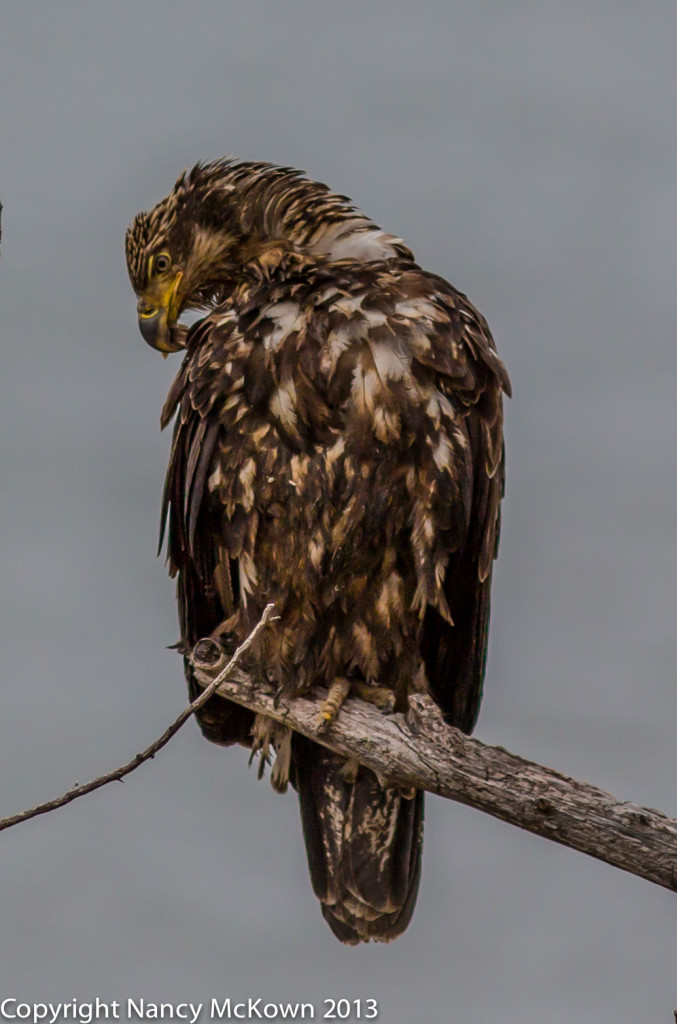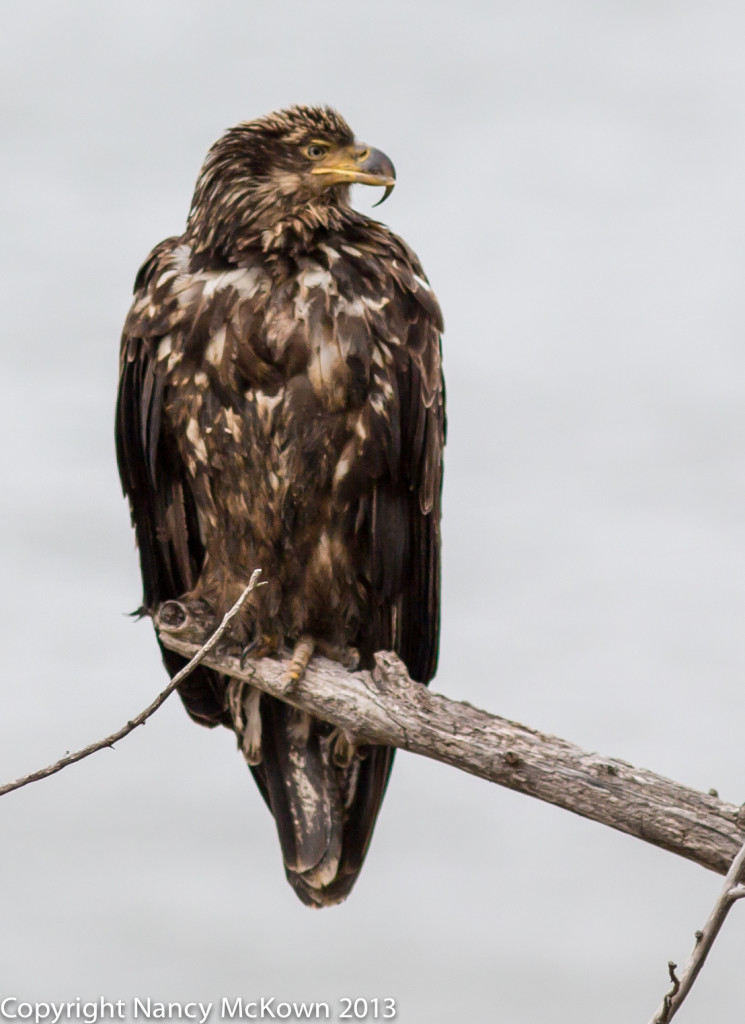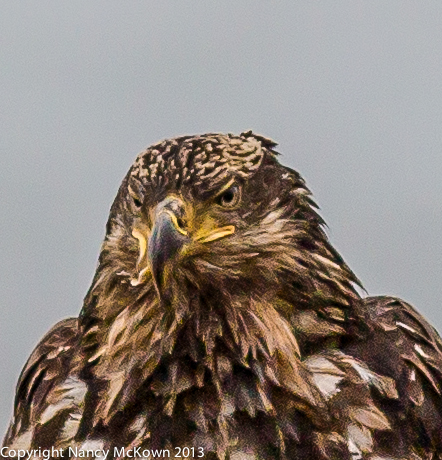Be Prepared to Photograph the Unexpected
I try to carry my camera with me in the car, even when I’m not on a mission to photograph birds. I curse myself if I come across what could be an awesome bird shot and I don’t have my camera. Most of the time, I don’t use it because I’m on the road and generally don’t see anything worth stopping to shoot. But a while back, on a grey and windy day, I came across an immature bald eagle just resting on a dead tree branch overlooking Lake Michigan.
I pulled off the road. Even though birds are generally less spooked by cars than small humans tiptoeing toward them, there was no way I could stay in the car and get any worthwhile photographs. I got out of the car with my camera and immediately started shooting. I usually shoot, then take a few quiet steps, shoot again, and repeat this pattern until I get as close as I possibly can, or until the bird flies away. This way I’ve at least got something to take away with me besides the excitement of coming across one of these beautiful birds.
This time the eagle just looked at me as I slowly approached. In fact, he was so bored that he started preening himself. I was able to climb down onto a friend’s deck (thank you Mary Kay and Mark) and keep shooting.

Camera Shake Causes Blurry Images
It was a very windy day, and I did not have my tripod or the bean bag that I use as a stabilizer in the car. Wind is a problem for photographers. Even slight movements get magnified at the end of long lenses and hoods and result in fuzzy images. This can happen even when using a tripod. I had to stabilize the camera as much as I could by propping my elbows on the deck railings and cradling it against my body. I also cranked up the shutter speed (I’d much rather have noisy photos than blurry photos) and, very gingerly, kept pressing the shutter button.
It’s quite an effort to hold the camera still when hand holding in heavy winds. The wind was coming out of the west, right off the lake. During this shoot, my hands could feel that 300mm lens move about and my eyes could see the effects the wind was having on my ability to center that subject in the viewfinder. Waiting for the wind to calm down was not an option, nor was sheltering the camera with my back.
Image Stabilizer on the Lens
A 300 mm lens is really the largest lens that can be reliably hand held. Anything bigger should have a tripod. On this shoot, the image stabilizer on my lens proved to be very useful to help compensate for camera shake caused by the wind. However, if the subject is moving, image stabilization will not help. It’s only helpful to reduce blur that comes from the photographer during hand held shooting.
Also, above a certain shutter speed, the stabilizer is not useful and may even cause more blurriness. The image stabilizer on my lens automatically shuts off when it senses a tripod is attached.
What the Camera Captured
I wasn’t close enough to fill the viewfinder with the eagle, but it was still an impressive sight. I stood there, heart pounding,with elbows propped on the deck ledge and shot until the bird flew away, maybe 20 minutes.
The camera display showed some usable shots, but I didn’t realize what I had until I imported the photos into my post processing software. At first I was disappointed because it looked like most of my shots were blurred.
But when I zoomed in, it was clear from these photographs that this eagle’s lower beak did not match up with his upper beak.


I sent these photos to Rebecca Lessard, who heads Wings of Wonder, a non-profit raptor sanctuary focusing on education, rehabilitation and research, located in Empire, Michigan. Rebecca forwarded my photos to a supervisor of the US Fish & Wildlife Service for Michigan. He believes this deformity may have been caused by environmental contamination.
I keep watching for this bird, hoping to come across him again. No luck so far. He’s big, and he looks healthy, so my hope is that he will survive and thrive.









